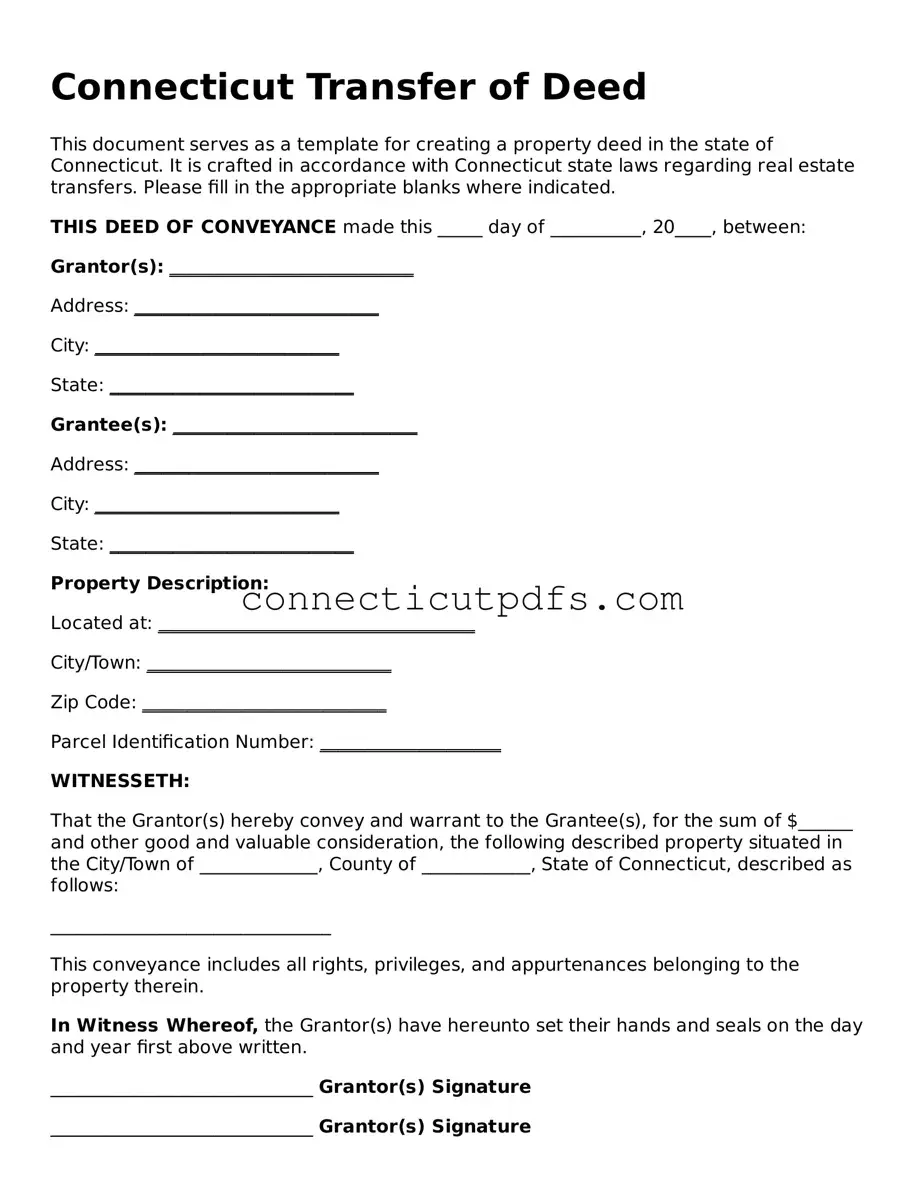Connecticut Transfer of Deed
This document serves as a template for creating a property deed in the state of Connecticut. It is crafted in accordance with Connecticut state laws regarding real estate transfers. Please fill in the appropriate blanks where indicated.
THIS DEED OF CONVEYANCE made this _____ day of __________, 20____, between:
Grantor(s): ___________________________
Address: ___________________________
City: ___________________________
State: ___________________________
Grantee(s): ___________________________
Address: ___________________________
City: ___________________________
State: ___________________________
Property Description:
Located at: ___________________________________
City/Town: ___________________________
Zip Code: ___________________________
Parcel Identification Number: ____________________
WITNESSETH:
That the Grantor(s) hereby convey and warrant to the Grantee(s), for the sum of $______ and other good and valuable consideration, the following described property situated in the City/Town of _____________, County of ____________, State of Connecticut, described as follows:
_______________________________
This conveyance includes all rights, privileges, and appurtenances belonging to the property therein.
In Witness Whereof, the Grantor(s) have hereunto set their hands and seals on the day and year first above written.
_____________________________ Grantor(s) Signature
_____________________________ Grantor(s) Signature
_____________________________ Notary Public Signature
My Commission Expires: ___________
State of Connecticut, County of ____________:
On this _____ day of ____________, 20____, before me personally appeared ___________________________ and ___________________________, known to me to be the person(s) whose name(s) are subscribed to this instrument, and acknowledged to me that they executed the same in their capacity as ____________.
In Witness Whereof, I have hereunto set my hand and affixed my official seal.
_____________________________ Notary Public Signature
My Commission Expires: ___________
This template provides a structured format for a property deed in Connecticut, ensuring that all essential details are captured accurately. Users should complete the provided blanks with their information to create a valid deed.
